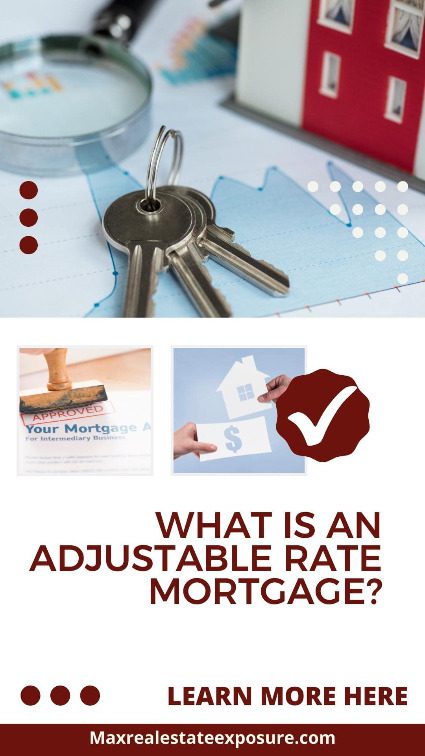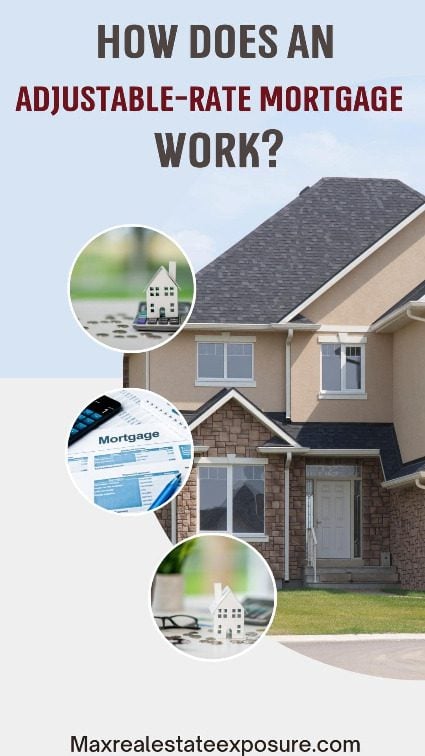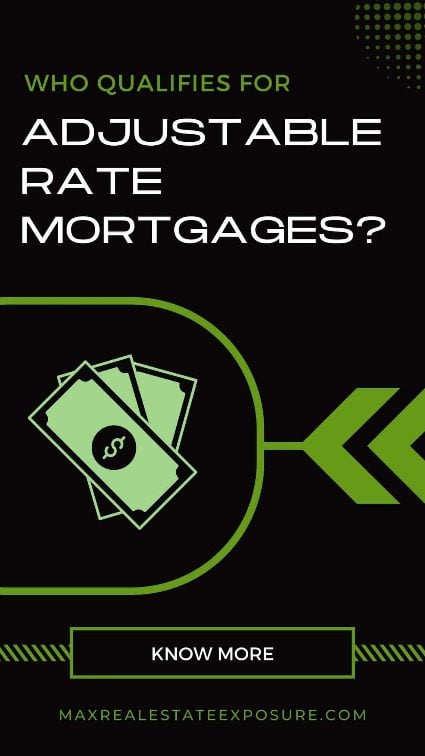 When you have decided to search for a new home, you have many choices to make. What features do you want, how many bedrooms do you need, and which neighborhood do you want to live in?
When you have decided to search for a new home, you have many choices to make. What features do you want, how many bedrooms do you need, and which neighborhood do you want to live in?
These are just a few of the choices you need to think about when buying a home.
Another one of those choices is the type of mortgage that is right for your financial situation. An adjustable-rate mortgage or ARM is a popular type of home loan that might be right for you.
It could offer lower interest rates and mortgage payments compared to fixed-rate loans.
We’ll look at ARM loans so that you are better informed to help you choose the type of mortgage that is best for your situation. There are pros and cons to ARM’s worth understanding.
What is an ARM Loan?
Do many potential home buyers ask what an adjustable rate loan is? The question will be asked to both real estate agents and lenders.
An adjustable-rate mortgage is a loan that uses a changing interest rate based on the market after an initial fixed period.
An ARM mortgage is often preferred to a fixed rate home loan when someone is not going to stay in a home long. Adjustable rate mortgages are popular among buyers whose companies often relocate.
Adjustable-rate mortgage loans are also referred to as variable-rate mortgages. It is a loan program where the initial interest rate is usually lower.
While an ARM offers an attractive rate, this isn’t going to last forever. Once the initially lower interest rate period is over, the rate can change. The ending could mean unpredictable monthly payments, which make budgeting difficult.
Fixed-Rate vs. Adjustable-Rate Home Loans
If you need your monthly payments to remain the same, a fixed rate mortgage will offer this stability throughout the loan period.
With an adjustable mortgage rate, the interest rate initially gives the borrower a more attractive lower monthly payment. When this period ends, the interest rate could go up or down.
If the interest rates have gone down, it will mean lower monthly payments. Though, if the rates have gone the other way, the adjustable rate mortgage will be more expensive than the fixed rate alternative.
The unpredictable mortgage payments in the future are something to consider with adjustable-rate loans. The initial rate could be attractive, but you could be under financial pressure if mortgage rates shoot up.
In order to buy a home, you’ll need a minimum credit score, whether fixed or an adjustable rate.
What Should You Expect With an Adjustable-Rate Mortgage?
 This type of home loan has two different phases, the fixed and the adjustment period.
This type of home loan has two different phases, the fixed and the adjustment period.
Fixed period
At the start of the loan term, there will be a fixed interest rate. The fixed-rate period can typically last for 5, 7, or 10 years; during this time, mortgage payments will remain the same.
Adjustment period
When the fixed period is over, the adjustment phase beings. This means the interest paid will change regularly in line with the benchmark rate. The benchmark will be stated in the loan terms.
On a 30-year mortgage, the fixed period is likely to be no more than a third of the loan term. Then for the rest of the time, the interest rate could change for better or worse.
Usually, the longer the interest rate is fixed, the higher it will be.
Conforming and Nonconforming ARMs
When deciding which adjustable mortgage rate option is best, you might hear about conforming and non-conforming loans. Conforming loans need to follow the guidelines from Fannie Mae and Freddie Mac that allow them to be purchased by these organizations.
The original lender can sell conforming loans to these government-sponsored organizations. These loans can then be repackaged and sold to investors in the secondary mortgage market.
Loans that do not follow the rules set by Fannie Mae and Freddie Mac are non-conforming. Though if the loan is non-conforming, there are some potential risks for borrowers. Most lenders that offer these nonconforming loans are reputable, but some are not.
There could be some reasons why a nonconforming ARM makes a good choice for borrowers, but before you agree to this type of mortgage, you need to be sure you fully understand the details of the loan. Reading through the fine print might reveal that the nonconforming ARM has rate resets that you need to be aware of.
Despite this, the FHA and VA have nonconforming ARMs that the government backs. Applying for a nonconforming adjustable rate mortgage through the FHA or the VA doesn’t mean you are exposing yourself to the same risks you might otherwise.
Both VA loans and FHA loans have adjustable rate programs. The same is true when rehabbing a fixer-upper and using an FHA 203k loan. Rate adjustments will be the same as with conventional loans.
Mortgage programs for first-time buyers also offer these options.
Rates and Caps With Adjustable Rate Mortgages
Many different factors contribute to the interest rate you will pay on your mortgage. Your financial situation and the broader economic conditions contribute to the interest rate you will pay on the adjustable-rate mortgage.
Some lenders use a low rate to attract borrowers. This attractive rate will disappear during the mortgage, and the new rate could not be competitive compared to other mortgages.
The rate used on an ARM mortgage will be bench marked to a rate named in the terms of the loan. This could be the U.S. Treasury rate or another finance rate. This figure will be used as the point of reference to establish the rate on the ARM.
If the benchmark rate rises, it is usually capped to a maximum. When interest rates rise, this cap will prevent sudden increases in mortgage payments.
For example, when you have a variable interest rate, it could go up as much as two percent in one year. It is referred to as the annual cap. There is also the lifetime cap which is the highest the interest rate can go over the life of the loan.
It is not uncommon for the lifetime interest rate cap to be as high as 6 percent. Market conditions will dictate whether you get lower rates or a higher rate.
Use an Annual Percentage Rate Calculator
You can use an APR calculator to determine the APR or your adjustable rate mortgage loan. Your APR can let you compare different mortgage programs for fees and terms. Just plug in your loan amount, time in years, starting interest rate, the index, and the margin.
Your loan officer or mortgage broker should also be able to do these calculations.
Refinancing an Adjustable Rate Mortgage
 Though the ARM might have been suitable for you when you purchased your home, this might not still be the case years later.
Though the ARM might have been suitable for you when you purchased your home, this might not still be the case years later.
If your financial situation has changed, refinancing your adjustable mortgage rate to a fixed-rate mortgage offers a stable monthly payment.
Refinancing involves taking out another mortgage to repay the first one. After you have closed on the new loan, you will pay the new fixed mortgage payment each month.
If the interest rates are favorable when you do this, a fixed-rate mortgage could save you a lot in interest payments.
Many borrowers love to go with the no closing costs refinancing option.
The process of refinancing is similar to applying for a typical mortgage. The lender will require proof of income, including bank statements, pay stubs, and tax returns. They will also check your credit history and credit score when underwriting the loan.
You can get a free credit report copy once a year to ensure your score is where you believe it to be.
Higher Down Payments Can Be Vital With Variable Rate Loans
A good size down payment or at least twenty percent is preferable with an adjustable rate loan. Not only will you avoid PMI, but you could be in financial hot water when you don’t put down enough money and the market shifts.
If your property declines in value and you don’t qualify to refinance, or you don’t have enough money to pay off your loan, you could be stuck in an awful spot. This situation happened to quite a few folks back in the downturn of real estate markets in the 2008-2009 time frame.
While the average down payment for a first-time home buyer is six percent, it is worth considering putting down more with an ARM.
Types of Adjustable Rate Loans
There are a few different adjustable rate mortgages to choose from. Let’s take a look.
5/1 and 5/6 ARM loans
5/1 and 5/6 refer to how long the fixed rate period lasts and the frequency the rate adjusts after that. So, these loans have a fixed rate for the first five years. 5/1 loans change once yearly, and 5/6 adjusts the rate every six months.
There could be a rate cap on the loan, which is also explained in numbers. The number set could look something like 2/2/5. In this case, the first “2” gives a limit of a 2% increase when the fixed period ends.
The second “2” is the maximum increase each year after that, in this example, 2% again. Typically, 2% is a standard value for yearly increases to the adjustment cap.
The last number is the overall maximum increase during the loan term. In this example, the rate could increase by up to 5% until the loan is paid. A lifetime adjustment cap of 5% is typical, but sometimes higher caps are included. With a higher number, your monthly costs could escalate considerably before the mortgage is paid off.
Other ARM Loan Options
There are also 7/1 and 7/6 ARMs, with a fixed rate period of 7 years. Also standard are 10/1 and 10/6, with the first ten years at a fixed rate.
Keep in mind adjustable rate mortgages typically have a 30-year term.
The Benefits of ARM Loans
If you are looking for the lowest possible interest rates at the beginning of your mortgage, an ARM could be the best option. Lenders tend to offer attractive low rates for the first 5 to 10 years, allowing you to save significantly.
With a lower monthly mortgage, you could use any spare cash to pay the home loan faster. If you pay more of the principal each month, you will further reduce the interest you spend on the loan.
An ARM loan makes even more sense if you don’t expect to live in the home for longer than the initial fixed period. Moving home within five years means you won’t have to worry about the interest rate increase during the adjustment period.
Doing this could allow you to save more to make moving to a larger home happen sooner.
Is It More Difficult to Qualify For an Adjustable Rate Mortgage?
 While you might need a reasonably good credit score to qualify, it isn’t higher than many other types of mortgage. This type of mortgage will generally need a credit score of 620 and above.
While you might need a reasonably good credit score to qualify, it isn’t higher than many other types of mortgage. This type of mortgage will generally need a credit score of 620 and above.
As with other home loans, you will need to prove your income so the lender can be confident that you can afford the monthly repayments.
Who Benefits Most From an ARM?
If you are comfortable with a monthly mortgage payment that will change once or twice a year after an initial period, ARMs offer advantages. They are often better for new home buyers purchasing starter homes and people who plan to move frequently.
You could refinance even if you don’t plan to move before the fixed period ends or your situation changes. However, if there has been an increase in interest rates before you refinance, your new fixed-rate mortgage may not reduce your loan payments by much.
Using an adjustable rate mortgage to finance your home purchase is another choice you can make when home buying.
But if this type of loan suits your situation, it does offer the possibility of lower mortgage payments at the start of the home loan.
Pros and Cons of an Adjustable Rate Mortgage
Let’s summarize the advantages and disadvantages of an adjustable mortgage rate.
Pros of an Adjustable Rate Mortgage
- May help a potential home buyer qualify for a loan
- Lower mortgage rate in the fixed rate time period
- The flexibility of having a lower upfront interest rate when you know you’ll be moving again soon
- The interest rate is capped on how much it can increase
- If interest rates drop, then your mortgage payments will go down
Cons of an Adjustable Rate Mortgage
- Your payments can go up after the fixed mortgage period ends
- You could lose the home if you cannot afford higher mortgage payments
- Adjustable rate loans are more risky and complicated than traditional fixed-rate mortgages.
Final Thoughts on Adjustable Rate Loans
For some home buyers, a variable rate loan is perfect. It offers a low-interest rate and a cap on interest rate changes after the fixed period ends. It is a good option when you’re confident you’ll be relocated before the fixed period ends.
On the other hand, these mortgage loans are not for everyone. The introductory period could be attractive, but it isn’t a popular choice when you need financial stability. ARM rates can be great, but fixed rates are best when you don’t want the unknown significant increases.
About the Author: The above Real Estate information on what is an adjustable-rate mortgage is provided by Bill Gassett, a Nationally recognized leader in his field. Bill can be reached via email at billgassett@remaxexec.com or by phone at 508-625-0191. Bill has helped people move in and out of many Metrowest towns for 35+ Years.
Are you thinking of selling your home? I am passionate about real estate and love sharing my marketing expertise!
I service Real Estate Sales in the following Metrowest MA towns: Ashland, Bellingham, Douglas, Framingham, Franklin, Grafton, Holliston, Hopkinton, Hopedale, Medway, Mendon, Milford, Millbury, Millville, Northborough, Northbridge, Shrewsbury, Southborough, Sutton, Wayland, Westborough, Whitinsville, Worcester, Upton, and Uxbridge MA.

